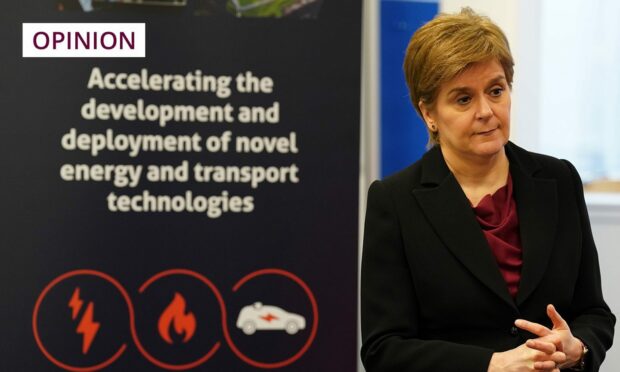Rollercoasters exist to provide people with the thrill of terror without having to deal with the consequences.
A similar observation could be made about the SNP’s consultations with Scottish business on major economic decisions – they provide the perception of listening without having to deal with the consequences.
Nicola Sturgeon’s new Energy Strategy and Just Transition Plan is a case in point.
First Minister @NicolaSturgeon discusses the draft Energy Strategy and Just Transition Plan.
This draft route map outlines the actions we will take to deliver a fair and just transition to a net zero energy system.
To find out more visit https://t.co/DGfYQvqg9s pic.twitter.com/dOnNYNM8PV
— Scottish Government (@scotgov) January 11, 2023
The central thesis of the document – that Scotland needs to move away from the extraction of fossil fuels, which in any case are running out, over time – is essentially a correct one.
There could be an argument around timescales and energy mix, but with a finite resource like oil and gas, there is clearly a time limit on extraction.
Draft plan is a fait accompli
It is therefore right and proper that the Scottish Government plan today to protect jobs and the economy in the north-east for a post-fossil fuel future.
This plan is further sweetened by the, admittedly somewhat vague, prospect of 77,000 new renewable jobs, as well as the obvious benefits of low-carbon energy.
The problem with the plan is that it is disingenuously dubbed a draft, when in reality it is a finished product and one done without proper consultation with the industry.
Scotland will now have a presumption against new oil and gas exploration, and will transition to low carbon energy over the next two decades, but those directly impacted have had little say.
The Energy Strategy and Just Transition Plan is done and dusted, a fait accompli.
The consequences of this tin-ear approach are clear to see, with the understandably furious response from oil and gas industry stalwarts and local business groups who felt ambushed by the diktats from Edinburgh.
Not even the SNP’s own just transition tsar was informed.
The situation is particularly absurd because there is – or perhaps has been – a broad consensus between the North Sea industry and government on the need to reach net zero in a sustainable way.
Perhaps this will be reflected in the open consultation that is just beginning, after the fact, but having announced the so-called draft in such categoric terms, it is surely unlikely the SNP government will now make significant concessions.
Sturgeon’s administration has form for this, regularly paying lip – or, rather, ear – service to businesses in consultations, when in reality a plan has already been drafted and will soon be enacted.
They are always happy to hear from business, but rather less happy to listen to it.
SNP government thinks it knows best
A good example is the SNP’s National Strategy for Economic Transformation, published in March last year, where businesses such as financial services were given scant input, despite having to play a key role in the implementation and outcomes.
Such an uncollaborative approach is not only disrespectful but foolish, leading to a less effective strategy and poorer outcomes.
Part of this reticence comes from Sturgeon herself, who has never been as comfortable dealing with business, particularly big business, as her predecessor, Alex Salmond.
But the attitude also reeks of an SNP government that thinks it knows best, even in the face of opposition or simply alternative approaches from those on the ground.
The transition from oil and gas to a low carbon future is vital for Scotland and the world, but it cannot be conducted in a vacuum.
If it is to succeed – and succeed it must – it will require a cooperative and profitable relationship between government, industry and, perhaps most importantly, local people.
A good way to start would be to make consultations genuinely consultative, and to reflect the findings of those consultations in draft plans.
Or, to put it another way, it would be good for the SNP to start ensuring not just that it hears the concerns of business, but actually listens to them.












Conversation